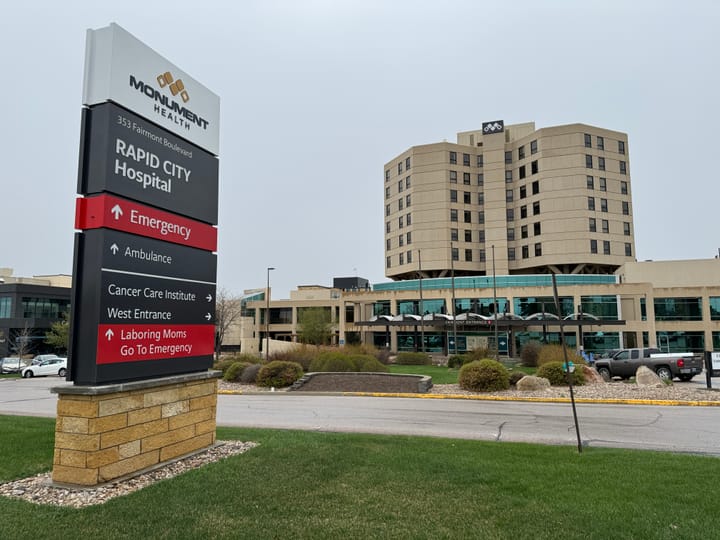Vaccinations slump as SD Health Department reorganizes community health system
"We need to keep babies on a vaccination schedule, and this makes that really difficult."
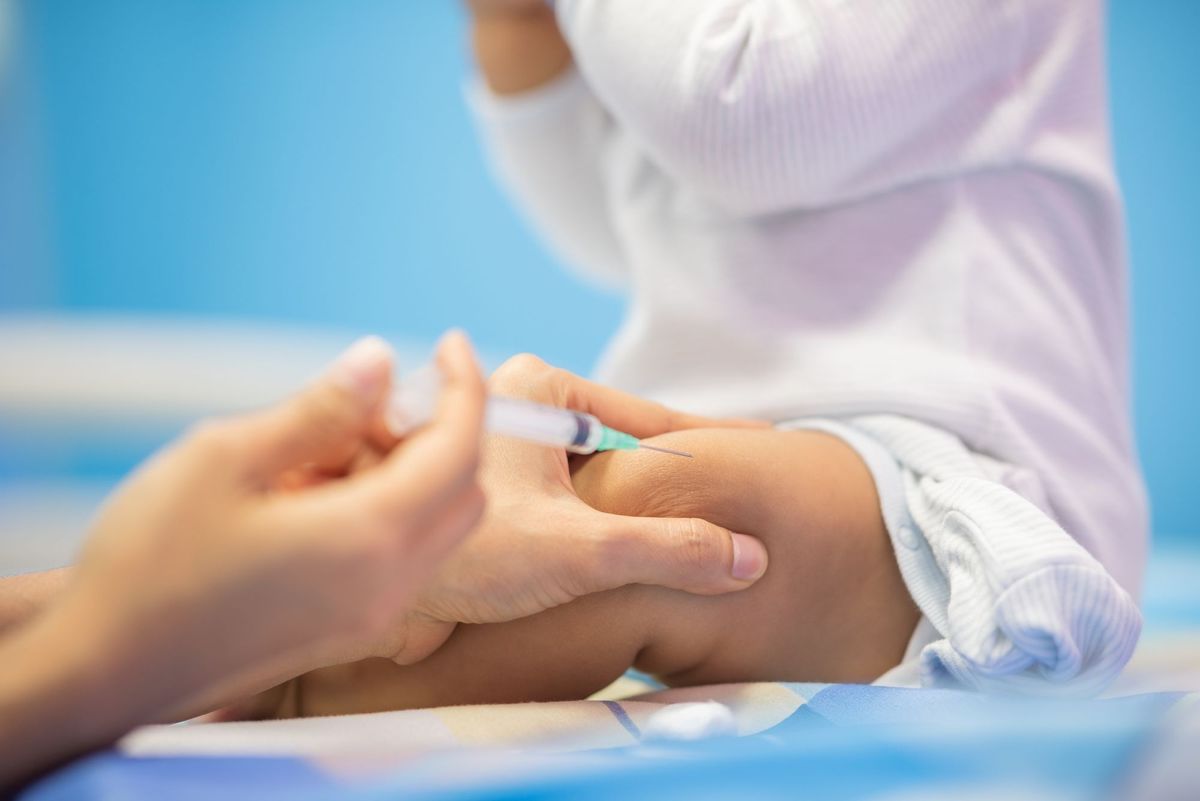
Quiet changes made to the South Dakota Department of Health's Community Health Services and the Women, Infants and Children program have left many counties without resident community health nurses, exacerbating an already-declining trend in some vaccinations across the state.
Clay County Commission chair Betty Smith told South Dakota News Watch that her county reported zero vaccinations in September after the DOH restructured community health and told its staff they could choose to work either in WIC or community health but not both, as they had before.
When Clay County nurses opted to work for WIC, there was suddenly nobody allowed to administer vaccines.
"Vaccinations occur when mothers come in for WIC services, and they're not happening," Smith said. "This is a system guaranteed to decrease the vaccination rate."

Clay County vaccine drought
Clay County now shares a community health nurse with neighboring Lincoln County. Smith has concerns about the long-term effectiveness.
"Our county is bundled with Lincoln County, and the Lincoln County nurse is really, really busy and doesn't have time," she said. "We've had from the end of August to (the end of October) two nurse visits, and we used to have three days a week of nursing service."
Smith said she was told the nurse wouldn't come to Clay County for single vaccinations, and they would instead have to bundle services with other clients on specific days. But limiting service availability to create more-efficient vaccine days could create barriers for people needing the service.
"For people who are working, they have to take time off from work for which they are likely not paid to go to these appointments," Smith said. "If you live in poverty, you don't have the capacity to decide necessarily when you can go and do these things."
Yankton County Commissioner Dan Klimisch agrees.
"When mothers comes in for WIC, they can't get the vaccination appointment like they used to be able to, so they have to take off more time in order to do that," he said. "We just feel that we're offering less services."
Cutting costs for changing needs
DOH held multiple Zoom video conferences with commissioners to quell their concerns, telling them during a Nov. 6 call that the restructure addresses the "changing needs of our clients and citizens of South Dakota" while also helping the WIC program stay within budget, which they said has been exceeded by $1.2 million.
"We (had) a really unique model of providing WIC services in South Dakota that's pretty much unlike any other state," DOH Office of Child and Family Services administrator Katelyn Strasser told commissioners. "Our public health infrastructure, which kind of started with WIC, was built around having nurses provide WIC services. ... And it can be costly."
Strasser told commissioners she wants to get the service to a point where it will no longer rely on federal assistance or an increase of state assistance.
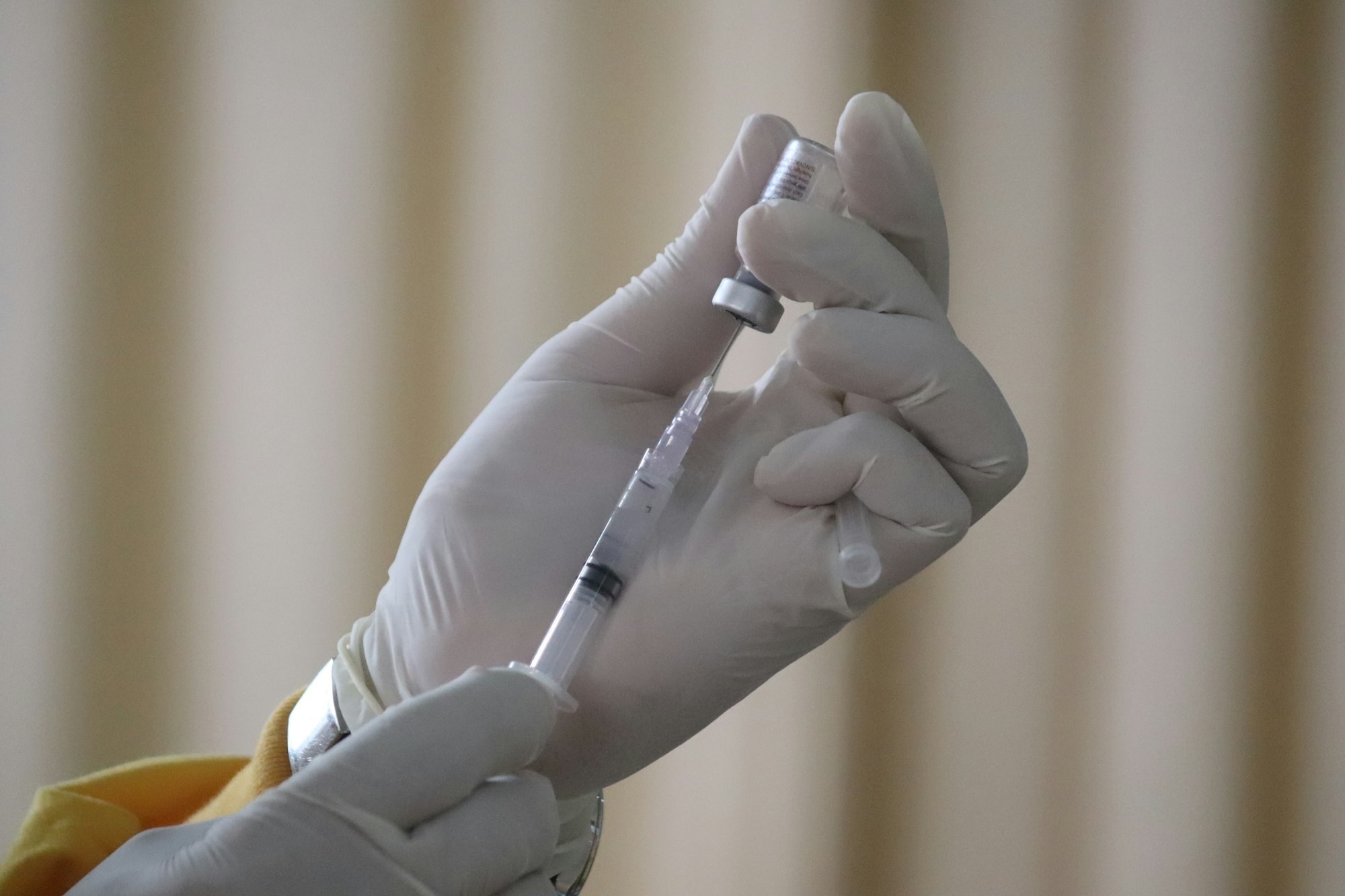
"We don't want to have to go to the Legislature to ask for general funds or something to supplement this federal funding because we know we can stay within budget," she said.
After nurses were given the choice between working for community health or WIC, 18 went to WIC and 35 chose public health nursing, according to DOH. If a county's community health staff chose to work for WIC, that county may now be sharing time with a neighboring county's nurse and losing a convenience that allowed for same-day immunizations and other health services for clients using WIC.

Counties left without a voice
Smith said she did not receive any official communication about the change in her county, only hearing about the restructure from her county's WIC staff weeks later.
"We weren't consulted whatsoever in this restructure, and I think that's problematic," said Klimisch, who told News Watch he didn't receive official communication either. "We're supposed to be have a partnership with the state on county public health, and the counties have an interest in public health and the welfare of our citizens."
Yankton County Commission chair Don Kettering said he didn't receive official communication either but is open to the changes DOH is making.
"There's two ways to attack budget deficits, and it's either from the income side or the expense side," Kettering told News Watch. "If you're going to not raise property taxes and other taxes, it's got to come from some place if you're going to keep funding all of these things, and I think that's their challenge."
Klimisch is less open to the changes and stressed the importance of providing good public health and preventative care.
South Dakota Codified Law Chapter 28-13 requires counties to assist their residents who are unable to pay for necessary medical care. He fears with less available service, more people will need relief.
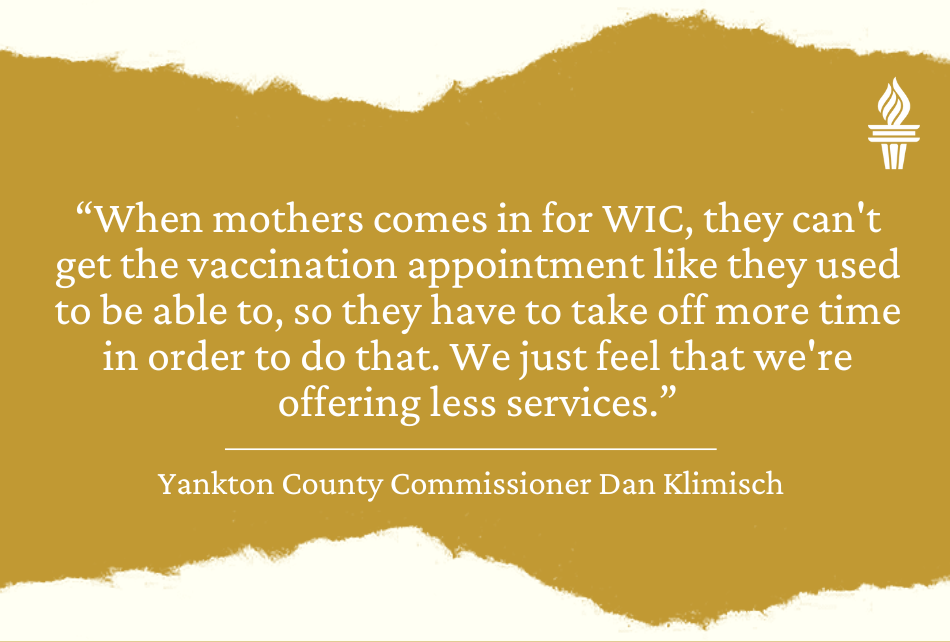
"The county is required by statute to do poor relief, so when people aren't able to pay their hospital bills ... those hospital bills are often times paid by the county, per South Dakota codified law," he said. "If people aren't getting the care ahead of time to fix health issues, they may become much more expensive to the counties down the line."
More service, just not all at once
DOH said the restructuring does not equate to less service.
"I think there may be a little bit of a misconception that we're taking away public health nursing services, that maybe if the nurse in your county chose (to work with) WIC and is now working full time at WIC that you'll be receiving less public health services, and that's just not our intent at all," Strasser told commissioners.
DOH said new services will supplement old services. There's a new focus on telehealth, and mobile health units will travel to communities without DOH locations.
Additionally, by shifting nurses to either CHS or WIC, staff no longer does work in two different systems and are able to "specialize in one area, allowing them to stay current on best practices, policies and procedures and carry a consistent case load," DOH said.

DOH: Clients were asking for it
DOH also told commissioners clients felt they were "receiving too many services at the same time," and that they would go to the office for WIC not realizing they'd be getting immunizations, pregnancy care appointments or other services that could prolong the appointment.
"It may seem like a good idea to have a nurse who can provide WIC and immunizations and screenings and prenatal care and risk assessment. But we weren't really doing this in a client-centered way," Strasser said. "We were hearing this pretty frequently from clients that they wanted less service at the same time."
Officials from the Department of Health declined an interview with South Dakota News Watch and instead sent a statement from Secretary of Health Melissa Magstadt.
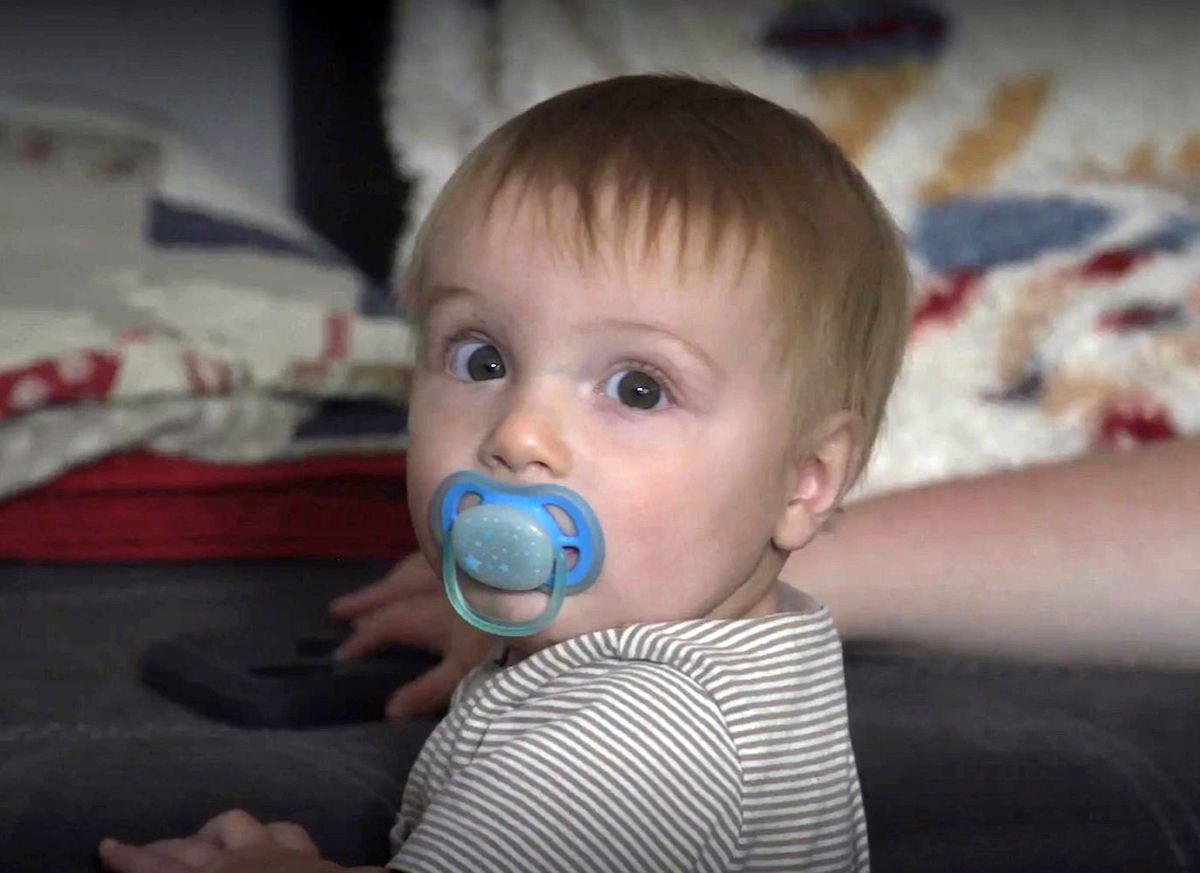
"Client satisfaction surveys indicated that they wanted different service delivery options and that receiving several services in the same appointment was burdensome and too time consuming," she said. "We are putting our friends, families, and neighbors first. Based on their feedback, we knew we had to shift our teams to accommodate their needs and modernize how services are provided.”
Strasser said having shorter appointments will help people who work by requiring them to take less time off. But she didn't say anything about the decrease in service days or possibility of needing to make two or more appointments to receive WIC and community health care. She also highlighted a push to schedule entire families into one appointment to increase efficiency.
"For someone who wants to go in and get immunization or do whatever they do in there and they take the day off, they'll have to come back for other things because that part of whatever they were asking for isn't a part of that visit," Lake County Commission chair Kelli Wollmann said.
Change could shift expenses to counties
Wollmann, who did receive official communication about the restructure, worries that if counties find the new setup to be less effective, community health may be in jeopardy.
"The WIC program is discretionary," she said. "By law, counties don't have to do this. ... County health nurses are statutorily authorized, which means expenditures for functions that state law authorizes but does not require counties to perform. It would be really sad if counties just pulled out for some odd reason."
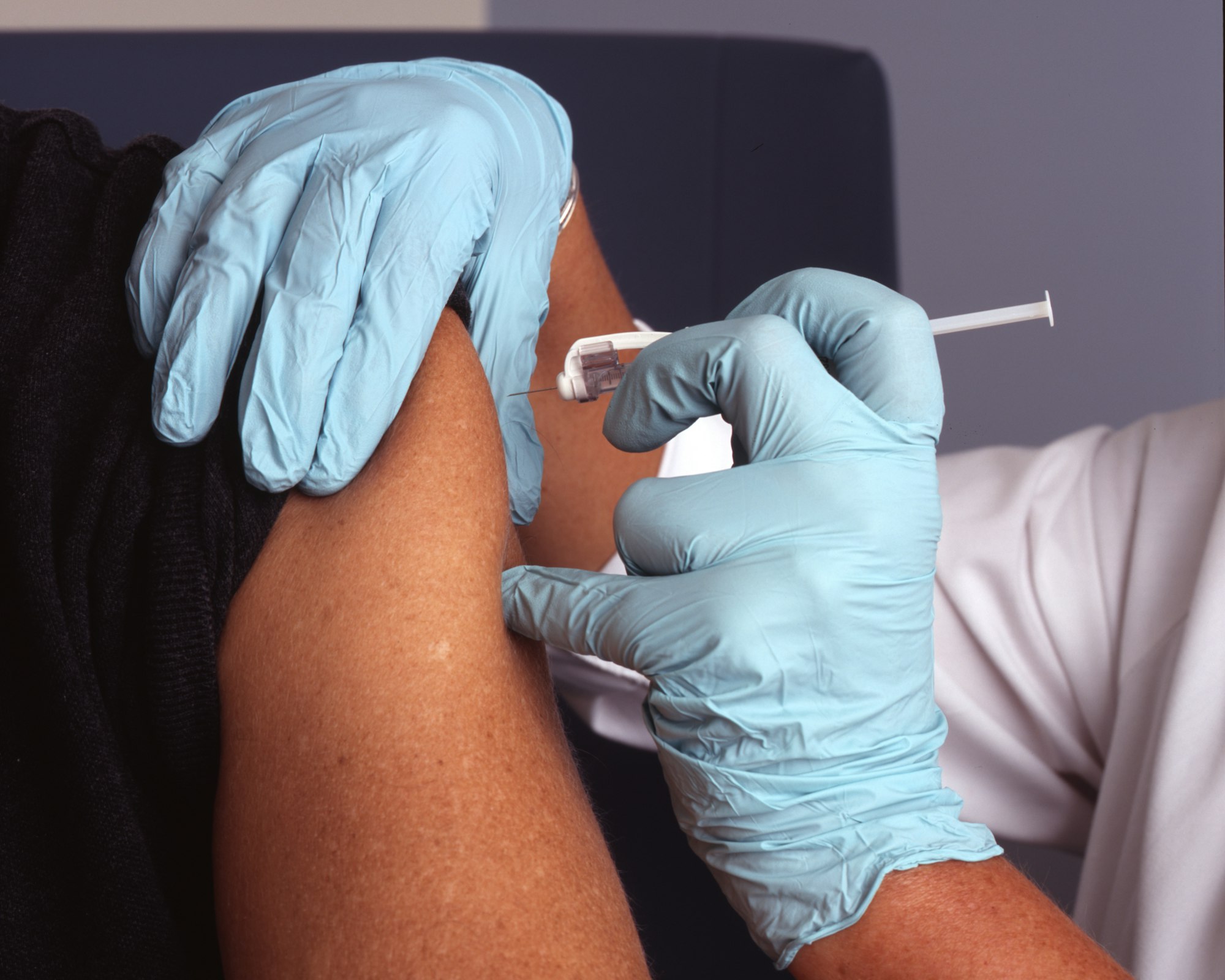
Klimisch is also concerned about what may be down the line.
"There's a history of the state just dropping these responsibilities onto the counties with no monetary way for us to pay for them," Klimisch said, making a comparison to juvenile detention being turned over to the counties without sufficient funding. "It's very troubling and I hope it's not what's happening here, but it certainly seems like that."
Fuel to the fire
The changes come at a time when childhood vaccination rates are already dropping in South Dakota.
The DOH School Immunization Dashboard shows vaccination for children entering kindergarten in the 2022-2023 school year trending below the previous year's levels, and with the exception of Hepatitis A and Hepatitis B, below pre-COVID-19 levels as well.
In the 2021-2022 report, DOH showed the state falling short of the Centers for Disease Control and Prevention's goal of 95% immunization with the measles, mumps and rubella vaccine after falling from 96% in 2019-2020 to 93.7% in 2021-2022.
This follows a nationwide trend of falling vaccination rates for kindergartners entering school, which the CDC reports is an 0.8-0.9% decrease among all vaccines from the 2020-2021 school year to the 2021-2022 school year.
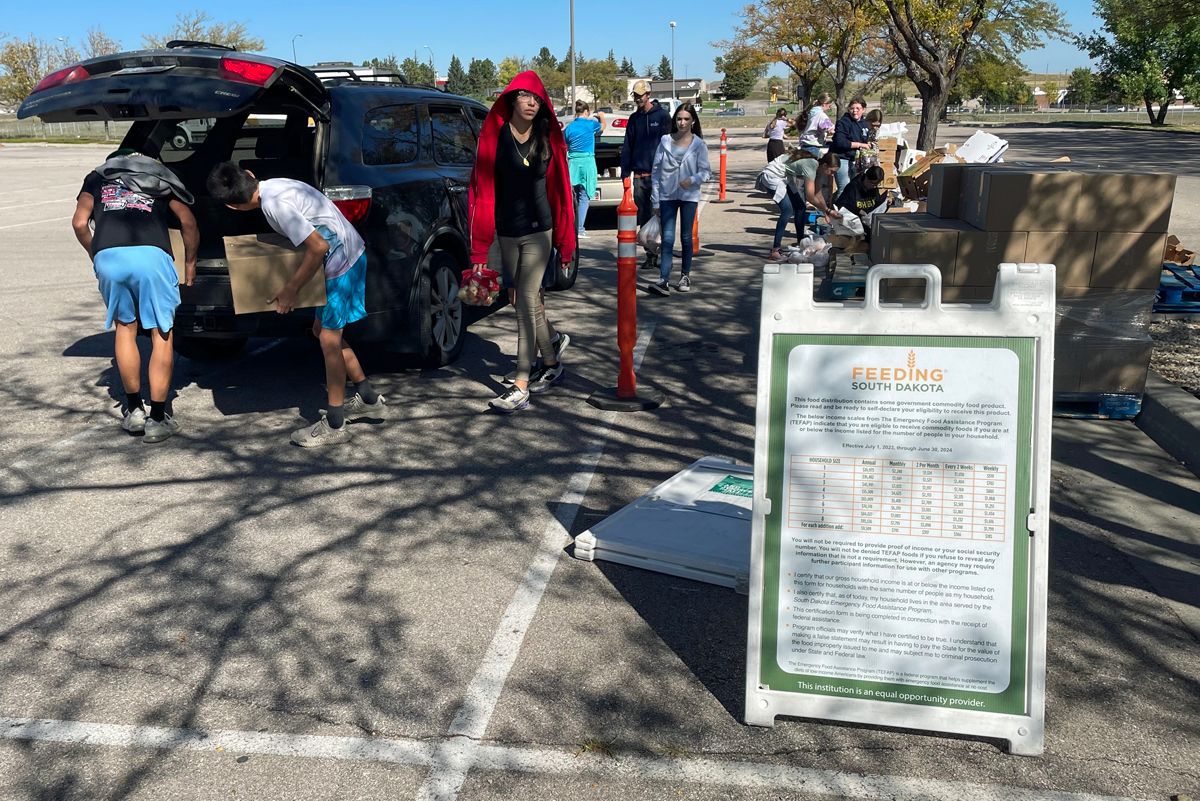
"We've got vaccines, but at the rate (of vaccination), they're going to expire before they're used," Smith said.
For Smith, the department's focus on larger service areas is just stripping the "community" out of the community health program.
"In many ways, the magic of the community health program is that it's nurses who live in the county who serve the county, and the women get to know them and trust them," Smith said. "When the community health nurse says 'your baby is due for a vaccination,' ... they're way more likely, because they're right there, to actually get the vaccination. The problem ... is that we need to keep babies on a vaccination schedule, and this makes that really difficult."



